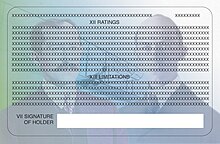Today, December 17, 2013, marks 110 years since the Wright brothers first flew at Kitty Hawk, North Carolina. The world changed that day (although since Twitter wouldn't be invented until about a century later, the world wouldn't realize it for a while:), and while the world of aviation has changed immensely since then, its core fundamentals haven't. People still need to connect face-to-face even in the age of Skype, and people still have an almost innate sense of longing to look down on the world from above.
To celebrate 110 years of flight, here are 10 things you might not already know about the Wrights:
1. The Wrights' first flight lasted 12 seconds and the distance of their flight was barely over half the wingspan of a modern Boeing 747: 120 feet for the flight, 211 feet for a 747-400.
2. They made three more flights that day. With practice, they got better, as they covered 175, 200, and 852 feet. (Not bad for people who didn't have a flight instructor, since the position didn't exist yet.) However, the last flight of the day ended up in a crash, which did some minor damage to the aircraft but left Wilbur uninjured.
This did not make them the first to crash an airplane, though, because
several people had tried to make airplanes before, most of which
crashed. The Wrights weren't the first to build an aircraft; they were
just the first to build one that worked.
3. It would be almost five years before the first fatal airplane crash. That dubious distinction goes to Thomas Selfridge, who died in the crash of a Wright Flyer. At the controls? Orville Wright.
4. Early pilot's licenses were signed by Orville Wright. (As I write this, there is one on eBay from 1927 which is going for $17,500.) When the FAA changed to plastic, credit-card sized licenses from the old paper ones, they picked a design that has a 747 on the front and the Wright brothers on the back.
5. Charles E. Taylor was the mechanic for the Wright brothers. Pilot's licenses have the Wright brothers on the back; aircraft mechanics' licenses issued since the beginning of 2013 have Charles Taylor's picture on them.
6. The picture that almost everyone has seen of that day on Kill Devil Hill was taken by John T. Daniels, who until that day had never touched a camera before in his life. Three of the flights (1, 3, and 4) were photographed. (Daniels was probably busy talking the world's first selfie during the second flight. Those took a lot longer back then because cell phones hadn't been invented yet.)
7. The unfortunate term "stall" was also due to the Wrights. They referred to the wing losing lift as a stall, which to this day confuses non-aviators into thinking the engine quit. A wing stall (or "aerodynamic stall") has absolutely nothing to do with the engine. If the engine quits, pilots usually refer to it as an engine failure because it's easier to type than "%@$#!".
8. After the Wright brothers' successful flight, aviation research in the United States stalled because they started to sue anyone who tried to make a better airplane in the U.S. That is a big reason why you learn French terms like "empennage" and "aileron" instead of "tail section" and "wiggly thing on the end of the wing": since the Wrights sued their American competitors, much of the progress in aviation for the next couple of decades would take place in Europe, out of the reach of American courts. That makes them patent trolls almost 100 years before the term was invented. Not the sort of thing history books tend to cover.
9. Alexander Graham Bell, who is well known as the inventor of the telephone, is also in the Aviation Hall of Fame. He was part of the Aerial Experiment Association, a group that conducted research into what would eventually become the aileron we know and love. Bell's research started approximately five years before the Wrights' first flight, and one of the AEA's main members, Glenn Curtiss, was later sued by the Wrights.
10. Just two months before the Wrights flew at Kitty Hawk, the New York Times ran an editorial saying that it would take somewhere between 1-10 million years before man would fly. They were only off by 1-10 million years. Considering it only took 44 years to go from the first flight to the first supersonic flight and then 22 more years to land on the moon, I can't even imagine what aviation will look like a million years from now.
Bonus: Wilbur, who like his brother stayed a bachelor all his life, was the first man to say that he "did not have time for both a wife and an airplane."
Although the 1903 first flight is the most famous, it wasn't until September 20th, 1904 that the Wrights successfully took off, turned, and landed back at the same field. The first written eyewitness account of this was published not in a leading science publication or Gizmodo, but in an article by Amos Ivey Root in the journal Gleanings in Bee Culture.


No comments:
Post a Comment